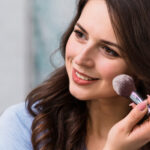Makeup is a powerful way to express yourself, regardless of your origins. But have you ever wondered how beauty trends differ across the world?
Table Of Content
- The Role of Culture in Shaping Makeup Trends
- Makeup Trends by Region
- Asia
- China’s C-STYLE Light Beauty
- Japan’s Ubumake & Inoui Liquid Foundation
- Korea’s Skincare-Inspired Base Makeup
- Complexion Makeup Extends to Men
- Beauty in the Digital Age
- Europe
- Organic Foundations
- Makeup Styles
- North America
- Breaking Unrealistic Beauty Standards
- Product Development
- South America
- Natural Beauty and Ethical Choices
- Makeup as Self-Expression
- Africa
- African Black Soap
- Shea Butter: Africa’s Gold
- Africa’s Beauty Industry Today
- Australia and Oceania
- Sun-Kissed Looks and Lightweight Foundations
- Emphasis on SPF Products
- Dewy Finishes and Fresh Skin
- How Social Media Connects Beauty Trends Across the World
- The Role of Influencers
- Viral Trends That Transcend Regional Boundaries
- Conclusion
Makeup isn’t just about products but about culture, too. Each country has its way of defining beauty, and some products are more popular than others.
In this article, we’ll discuss the global beauty trends. We’ll explore how makeup differs around the world. So, let’s start.
The Role of Culture in Shaping Makeup Trends
Makeup is about expressing who you are and where you come from. Every culture has its approach to beauty, and it’s fascinating how makeup reflects these traditions.
In ancient Egypt, makeup wasn’t only for beauty. In Japan, the Geisha makeup tradition is steeped in ritual. So, it’s clear that makeup isn’t just a tool for looking good.
In many Islamic cultures, makeup emphasizes increasing natural beauty with subtle touches. Meanwhile, Hindu festivals like Diwali focus on bold, vibrant looks. These differences show how deeply makeup practices are connected to cultural values.
Geography adds another difference. In places with hot, humid climates like the Middle East or Southeast Asia, makeup needs to be long-lasting and waterproof.
Social media has made it easier to discover beauty practices from all over the world. The beauty industry is responding by being more inclusive and celebrating diverse cultural perspectives.
Social media, too, gives voice to those pushing for respect and authenticity in makeup practice. The more we understand the cultural roots of makeup, the more we can appreciate its role in shaping beauty worldwide.
Makeup Trends by Region
Asia
Regarding makeup trends, Asia is always ahead of the game. Across the continent, we see a consistent focus on creating a natural, glowing complexion. The goal is a clear, fresh, natural look that enhances your beauty.
China’s C-STYLE Light Beauty
In China, the trend centers around C-STYLE Light Beauty, which aims to enhance natural features with a soft, delicate touch. It defines your facial structure while keeping the look cool and understated.
Japan’s Ubumake & Inoui Liquid Foundation
Japan is no stranger to makeup innovation, and this season, it’s all about Ubumake, a trend inspired by purity and softness. They look for natural, healthy-looking skin with a plump, youthful feel. To achieve this, products like Inoui Liquid Foundation are designed to contour the face and add dimension while keeping things light and airy. Plus, it has skincare benefits too.
Korea’s Skincare-Inspired Base Makeup
Korean beauty merges skincare and makeup. Bases like the Hera Skin Tint Comfy Spreader and Inoui Liquid Foundation deliver a glowing complexion. It also gives hydration, moisture, and a flawless finish. It’s like wearing your skincare while looking your best.
Complexion Makeup Extends to Men
Products like the OBGE Natural Cover Lotion are designed to subtly correct skin tone without feeling heavy. It’s perfect for anyone who wants a natural touch-up without fuss.
Beauty in the Digital Age
Technology is also making waves in Asia’s beauty scene. With AI-driven product recommendations and AR-based try-ons, brands are making it easier to experiment with makeup from the comfort of your home.
Europe
Regarding makeup in Europe, it’s all about finding the perfect foundation. In 2023, the European makeup foundation market was valued at USD 2.56 Billion, and it’s expected to grow to almost USD 3.78 Billion by 2030. You can guess how mandatory foundation is for their makeup routine.
Organic Foundations
European consumers increasingly turn to makeup foundations offering more than just coverage. They want products with benefits, like moisturizing or anti-aging properties. Plus, many are choosing organic, gentler options on the skin, even if they come with a higher price tag.
Makeup Styles
In Europe, makeup trends vary depending on the country. France focuses on minimalism and enhancing natural beauty. Italians love bold lips and radiant skin, while soft coverage and pastel tones dominate Nordic countries. Each region has its take on what makes a flawless complexion, but one thing is sure.
North America
When it comes to makeup in North America, representation is everything. People want beauty brands to show real diversity in their ads and products. They’re tired of seeing the same old ideals and are demanding inclusivity that reflects all skin tones, textures, and identities.
Breaking Unrealistic Beauty Standards
Consumers ask brands to ditch the old “fix this, correct that” language. Instead, they want to celebrate their natural beauty. Social media plays a significant role here. Platforms like TikTok are driving conversations about body positivity and self-acceptance.
Product Development
Creating inclusive products starts at the very beginning. Have your products been tested on all skin types? Are they designed with everyone in mind? Brands that prioritize diversity in their formulas and messaging are building trust. People want to know that what they’re buying is made with them in mind.
South America
South America is where beauty and opportunity collide. Brazil is the 4th largest beauty market globally, while Mexico ranks among the top 10 in cosmetics and personal care. For beauty brands eyeing global growth, South America is an exciting destination.
Natural Beauty and Ethical Choices
Latin American consumers love products with natural, safe ingredients. Organic, vegan, and cruelty-free options are gaining traction, especially among younger shoppers. They’re also big on preventive self-care, choosing products with SPF, vitamins, and anti-pollution benefits.
Makeup as Self-Expression
Makeup in South America is bold and creative. In Brazil, bronzed skin and bright lips rule. Argentina leans toward natural looks with bold brows and striking lips. Across the region, there’s a love for vivid colors, personalized shades, and extravagant styles.
Africa
Surprisingly, African women have always stood out for their stunning, unique beauty. One thing that stands out is the natural beauty melanin gives African women. Their skin is rich in melanin, which helps protect against the sun’s harsh rays and aging.
This natural gift is at the heart of their beauty routines. For example, 96% of Nigerian women between 18 and 25 believe looking good in public is essential. It’s no wonder that caring for their skin is so important to them.
African Black Soap
Have you ever tried African Black Soap? It’s a plant-based cleanser passed down through generations by the Yoruba people of West Africa. It contains ingredients like cocoa pod powder, palm oil, and plantain skin. This soap has antibacterial, antifungal, and anti-inflammatory properties. Plus, it’s full of Vitamins A and E, which makes it great for fighting acne and fine lines.
Shea Butter: Africa’s Gold
Shea Butter has been Africa’s beauty secret for centuries. It’s used to protect the skin from the harsh African sun and is packed with skin-loving benefits. Shea butter is rich in Vitamins A and E, so it helps with wrinkles, scars, and dryness. It’s moisturizing and soothing and acts as a natural sunblock.
Africa’s Beauty Industry Today
African beauty is shifting towards inclusivity and sustainability. African brands are tapping into their rich natural resources, like Shea Butter and African Black Soap, to create beauty products that speak to their heritage and meet the needs of modern consumers. Influencers are setting trends, and their voices are shaping the industry’s future.
Australia and Oceania
Regarding beauty in Australia and Oceania, the focus is all about keeping things natural, fresh, and radiant.
Sun-Kissed Looks and Lightweight Foundations
In Australia, lightweight foundations are a staple. They give just enough coverage to even out the skin without feeling heavy. It makes your skin look natural, almost like you’ve just returned from a day at the beach. Bronzer helps achieve that sun-kissed look, giving your face a warm, healthy glow.
Emphasis on SPF Products
Protecting your skin from the sun is a priority in this part of the world. SPF is essential, whether it’s in your foundation, primer, or used separately.
Dewy Finishes and Fresh Skin
Dewy, glowing skin is a big trend. Instead of matte, the look is all about that natural, hydrated finish. Highlighter is used to enhance the skin’s natural shine. It gives you a fresh, effortless glow that looks like you’ve spent the day outside.
The beauty industry is constantly evolving, and we’re seeing exciting shifts in how we approach makeup.
How Social Media Connects Beauty Trends Across the World
Social media platforms have transformed the beauty industry into a global conversation. Makeup styles from different cultures mix, blend, and influence each other.
The Role of Influencers
Influencers have become more than just beauty enthusiasts. They share their makeup routines and tips on platforms like Instagram and TikTok. These influencers teach us that makeup isn’t confined to a single culture or country.
Viral Trends That Transcend Regional Boundaries
Thanks to social media, a makeup trend can go viral and reach millions of people across the globe in a matter of hours. Remember the “fox eyes” look or the glossy eyelids trend? These viral trends spread like wildfire, transcending regional boundaries and becoming universally loved.
Conclusion
Makeup trends around the world show how beauty varies in different ways. Each culture has its own style that tells a unique story. I encourage you to step outside your usual routine. Try something different from another culture and see how it feels. Makeup is about expressing your true self.




